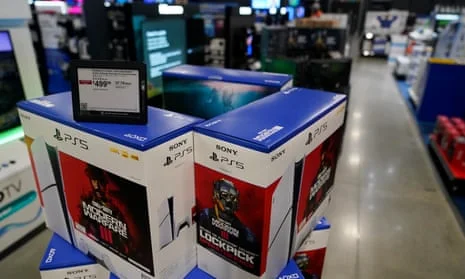
Are Tariffs the New Excuse for Rising Prices? What You Need to Know
In an economy marked by rising consumer prices, the impact of President Donald Trump’s tariffs on imports is causing concern among American buyers. With tariffs now imposed on a vast range of products, shoppers are left wondering how these changes will alter their spending habits. Recent discussions among economists suggest these tariffs may not only raise prices but could provide companies with a convenient justification for inflating costs even further.
Over the past few years, Americans have braced themselves for price increases across many essential goods—from groceries to electronics. As inflation pressures continue, Trump’s ongoing trade war introduces the specter of further increases. Paul Donovan, the global chief economist at UBS Wealth Management, states, “Tariffs provide exactly that story” for companies seeking to explain price hikes to consumers, especially after years of experiencing inflation.
Democratic Senator Elizabeth Warren critiques the tariffs, asserting they open the door for corporate profiteering. Warren warns that businesses may take advantage of this political landscape to increase prices without justifiable reasons. A recent phenomenon dubbed "greedflation" highlights this trend as companies inflate prices more for profit than for covering genuine cost increases.

Recent announcements from various companies paint a troubling picture. Fast-fashion retailer Shein and e-commerce platform Temu are set to raise prices beginning April 25, explicating that operating expenses have risen due to the new tariff structures. Nintendo has similarly indicated that its upcoming products might adopt new price points, admitting market conditions influenced by tariffs will affect accessory pricing.
Best Buy's CEO, Corie Barry, shared similar sentiments in a recent earnings call, noting that tariffs would undoubtedly lead to price hikes. Further, luxury brand Hermès has declared plans for a price increase targeted solely at its U.S. consumers, directly responding to the tariffs that exclusively affect this market.
Companies are employing several strategies to manage these surges. A noticeable trend among retailers is the introduction of surcharges that signal to consumers, "This tariff isn’t our fault." These additional fees can represent a significant portion of overall costs, effectively shifting some financial burden from companies to their customers.
Despite the backlash against these policies, Trump’s tariffs remain a fixture of his administration’s trade strategy, creating a blend of opportunities and challenges for American businesses. As companies weigh their options—either to absorb costs or pass them on to consumers—the average household risks exceeding budgetary limits that were already stressed from years of inflation.
The issue of consumer sentiment is divided along political lines, as highlighted in a recent survey from the University of Michigan, revealing stark differences in inflation expectations between Democrat and Republican voters. With a median expectation of 6.7%, the public worries about an uncertain economic future as tariffs loom overhead.
The reactions from the market indicate that businesses are cautiously responding to these pressures. However, it is evident that American consumers are poised for what may be a lengthy period of rising prices fueled, at least in part, by the ongoing saga of tariffs.
As Americans navigate this challenging economic landscape, the question remains: How will ongoing tariff policies from the federal government continue to shape consumer habits and corporate pricing strategies? Readers are encouraged to share their thoughts and experiences regarding rising prices in their local shopping experiences.